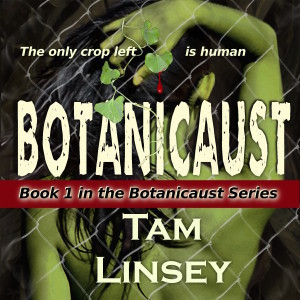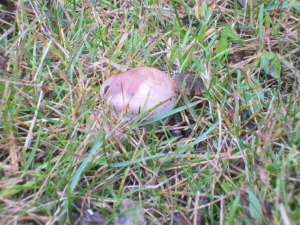Tam Linsey's Blog, page 2
October 25, 2014
Hope for Michael – a Reader’s Question
From Laura
Re: The Reaping Room
Any chance we’ll ever get to see what happens to Michael? I wish he could go outside, he’d come on leaps and bounds. I just want to wrap him in my arms and hug him! I have some wrap around sunglasses he can borrow, they look kind of like swimming goggles, maybe we can get him to someone who’d care? What would happen if they tried to turn him at the protectorate? his mind seems malleable enough that he could take to that way of life.
Tam says:
Thanks for the great question! Poor Michael. I don’t have any immediate plans to include him in future books. His situation is pretty hopeless, trapped in the mountain with the Fosselites. The Protectorate doesn’t accept “flawed” members – remember they wanted to euthanize Levi because he’s a carrier for CF? The Fosselite children tend to die young from genetic complications, although Michael is a particularly healthy guy. I guess the Fosselites did re-enter negotiations with the Protectorate (sort of) through Councilman Rael. Nothing is off the table at this point, even for Michael.
Do you have something you’d like to ask a character from Botanicaust? Or maybe you want to know more about the science behind the novel? Send questions to questions@botanicaust.com and look for the answer in the next newsletter!
October 18, 2014
Awaiting Audio
The audiobook production of Botanicaust is in its final stages, awaiting only final review by Audible. Here’s the first peek (er, listen?) of the retail sample to tickle your eardrums!
http://tamlinsey.com/wp-content/uploads/2014/10/Retail-Sample.mp3
Look for it on Audible, Amazon, and iTunes in November!
October 5, 2014
Mushroom Hunting
August and September are generally rainy months here, bringing out the mushrooms in abundance. One of my favorites is the meadow mushroom, Agricarus campestris, but the local field where I used to harvest them was renovated into a soccer field a few years ago, and the crop never came back.
This year, I found a couple of mushrooms I hoped might be meadow mushrooms. Since it has been a couple of years since I’ve found any, I decided to play it safe and double check my identification.The cap is a little browner than I remember, and the stalk a little thicker, but meadow mushrooms can be slightly brown according to my field guide.
The best way to verify that this mushroom is not a deadly Amanita is to take a spore print. I placed the cap on a white sheet of paper overnight, hoping the print came back dark brownish black, not white.
Alas, the spore print came back a pale reddish brown; not an Amanita, but not solidly enough a meadow mushroom for me to risk eating it (the poisonous Western Flat-topped Agaricus has a chocolate spore print.) The mushroom may or may not be edible — I’d rather not find out the hard way.

Puff ball mushrooms discovered on the way to the chicken coop
On the positive note, I do have puffballs in the yard – an easy identification! Mushroom omelet, anyone?
Disclaimer: If you want to try your hand harvesting wild mushrooms, I strongly encourage you to find a knowledgeable group or a mentor for mushroom hunting in your area. A close friend of mine had a dog who ate a poisonous mushroom this summer. The poor creature died in the vet’s office only a few hours later. I don’t want any of you to get sick, so exercise caution, please.
September 19, 2014
Reader Questions
From Twitter:
@tea_in_carolina asks: Would you tag BOTANICAUST as #Biopunk?
Tam says:
I originally thought not, because there isn’t a subversive element in Botanicaust, but after further research, I see that Biopunk science fiction is “a subgenre of cyberpunk fiction that focuses on the near-future unintended consequences of the biotechnology revolution following the discovery of recombinant DNA.” [Wikipedia].
So, yes, I’d say Botanicaust does just that!
There is a whole movement called DIYbio advocating “open source” access to biotechnology. These biohackers (or wetware hackers), are the biological equivalent of computer hackers who create and modify computer software and hardware as a hobby. Instead of altering computer code, they alter the code of life – DNA.
The jury is still out about the dangers of open source biotechnology, but the book Biopunk: DIY Scientists Hack the Software of Life by Marcus Wohlsen discusses this new DIY movement. You can read an NPR article and excerpt from the book here.
Oh, and the Botanicaust prequel will fall even deeper into the biopunk genre because in it we will meet the people who caused the Botanicaust with their negligent DNA experiments.
Thanks for the great question!
Do you have something you’d like to ask a character from Botanicaust? Or maybe you want to know more about the science behind the novel? Send questions to questions@botanicaust.com and look for the answer in the next newsletter!
September 15, 2014
Peas and New Potatoes
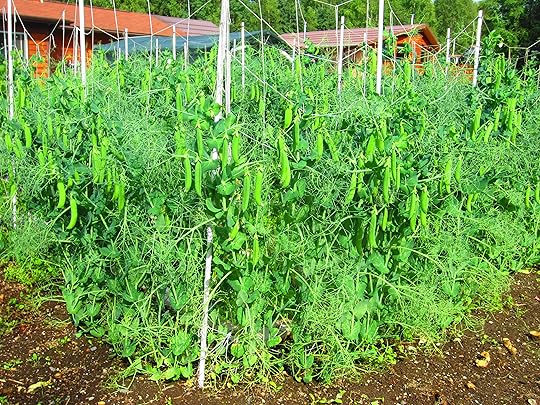
Okay, not my usual prepper notes here. Sometimes we must think about the now instead of the future, and new potatoes and fresh peas are a seasonal treat that can be hard to come by any other time of year. A perfect accompaniment to all that flavorful smoked salmon we preserved last month!
15 new potatoes (about 1.5 pounds)
2 cups shelled fresh peas
1/2 c. sliced green onion
2 Tablespoons butter
1 Tablespoon flour (I use potato starch)
1/4 teaspoon salt
white pepper to taste
1 cup milk
Scrub the potatoes and cut into large bites.  Cook in boiling water about 10 minutes, until you can easily push a fork through one. Add the fresh peas and stir for about a minute. Drain. Melt butter over medium heat. Add onion and stir once or twice. Stir in flour, salt and pepper then cook until the mixture bubbles. Add milk all at once. Cook and stir until bubbly and slightly thickened, then add potatoes and peas. Serve hot with a flavorful meat or other main entree. Feeds 4 to 6.
Cook in boiling water about 10 minutes, until you can easily push a fork through one. Add the fresh peas and stir for about a minute. Drain. Melt butter over medium heat. Add onion and stir once or twice. Stir in flour, salt and pepper then cook until the mixture bubbles. Add milk all at once. Cook and stir until bubbly and slightly thickened, then add potatoes and peas. Serve hot with a flavorful meat or other main entree. Feeds 4 to 6.
September 6, 2014
Salmon with Cilantro Pesto
Every July my family heads to the Kenai River with our nets to dip salmon. As a family of four, we are  allowed to keep 55 salmon – mostly reds – which weigh in at around 7 or 8 pounds. Add to that up to 10 flounder, and that’s a lot of fish to clean all at once! But honestly, we don’t eat that many fish, so we generally limit ourselves to 25 salmon and 1 flounder if we happen upon one large enough to bother with.
allowed to keep 55 salmon – mostly reds – which weigh in at around 7 or 8 pounds. Add to that up to 10 flounder, and that’s a lot of fish to clean all at once! But honestly, we don’t eat that many fish, so we generally limit ourselves to 25 salmon and 1 flounder if we happen upon one large enough to bother with.
We smoke about half, and freeze or can the rest to enjoy all winter long. Here’s one of our favorite salmon recipes!
Salmon with Cilantro Pesto
In a food processor or blender, pulse together until smooth:
3/4 to 1 cup fresh cilantro
3 T. olive oil
1 T. white wine vinegar
2 T. grated Parmesan cheese
1 T. slivered almonds
1 garlic clove
1/8 t. salt
–
Prepare about five 6oz salmon filet portions by sprinkling with salt and pepper. Spray a large skillet with non-stick cooking spray and heat over medium high heat. Place salmon filets, skin side up, in the skillet and cook four to five minutes or until golden. Flip and cook another five to ten minutes until the fish is almost opaque (do not overcook – the salmon will continue to cook slightly even off heat.) Remove fish to serving plates, leaving the skin behind (some people eat it, but we don’t care for it) and dollop each filet with the cilantro pesto. Serve immediately. Great with hot cooked rice or noodles and a side salad.








September 5, 2014
Salmon with Cilantro Pesto
Every July my family heads to the Kenai River with our nets to dip salmon. As a family of four, we are  allowed to keep 55 salmon – mostly reds – which weigh in at around 7 or 8 pounds. Add to that up to 10 flounder, and that’s a lot of fish to clean all at once! But honestly, we don’t eat that many fish, so we generally limit ourselves to 25 salmon and 1 flounder if we happen upon one large enough to bother with.
allowed to keep 55 salmon – mostly reds – which weigh in at around 7 or 8 pounds. Add to that up to 10 flounder, and that’s a lot of fish to clean all at once! But honestly, we don’t eat that many fish, so we generally limit ourselves to 25 salmon and 1 flounder if we happen upon one large enough to bother with.
We smoke about half, and freeze or can the rest to enjoy all winter long. Here’s one of our favorite salmon recipes!
Salmon with Cilantro Pesto
In a food processor or blender, pulse together until smooth:
3/4 to 1 cup fresh cilantro
3 T. olive oil
1 T. white wine vinegar
2 T. grated Parmesan cheese
1 T. slivered almonds
1 garlic clove
1/8 t. salt
—
Prepare about five 6oz salmon filet portions by sprinkling with salt and pepper. Spray a large skillet with non-stick cooking spray and heat over medium high heat. Place salmon filets, skin side up, in the skillet and cook four to five minutes or until golden. Flip and cook another five to ten minutes until the fish is almost opaque (do not overcook – the salmon will continue to cook slightly even off heat.) Remove fish to serving plates, leaving the skin behind (some people eat it, but we don’t care for it) and dollop each filet with the cilantro pesto. Serve immediately. Great with hot cooked rice or noodles and a side salad.
August 13, 2014
The Reaping Room Available Now
Humanity is more than DNA
In an all-too-plausible future, where Earth’s croplands have been destroyed by genetically altered weeds, a mentally challenged man discovers the dark secret that keeps his Fosselite father immortal, and must decide what being a “good boy” really means.
Buy at Amazon or in paperback.
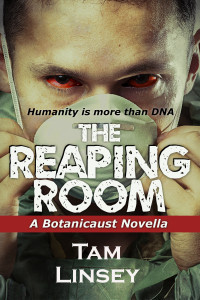
If you haven’t yet switched over to following my new website, you can do it here. Also, sign up for my newsletter for the most up-to-date notifications.








Rhubarb Leather
Re-posted from my June, 2014 newsletter. To sign up for future newsletters, click here.
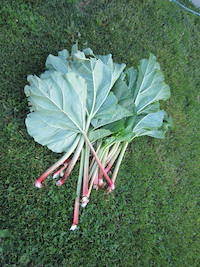
Summer is upon us, and the handful of last season’s potatoes have shriveled and grown eyes, the pantry jars are more empty than full, and we’re down to one of the two the chest freezers in the basement to hold what’s left of our meat supply. King salmon have hit the rivers, and the first run of coho salmon will soon follow for those who enjoy fly fishing. Right now, my garden’s in the first stage of harvest, and one of the very first fruits of the season here in Alaska is rhubarb (okay, not technically a fruit, but you know what I mean.)
How to preserve all that goodness for the coming year? Fruit leather! A handy snack that’s easy and light to pack for camping trips all summer. I like to make it with local honey because it helps control pollen allergies.
You’ll need a food dehydrator (or an oven that can be set to 140˚F or lower – higher temperatures will cause the outside of the leather to harden without drying the inside, creating the potential for spoilage and food poisoning.) If you are interested in building your own dehydrator, check out this website.
 Wash and chop the rhubarb stalks into one-half inch pieces (never the leaves! they are toxic.) Put about 1/4 cup of water in a saucepan with the rhubarb and cook it only until the rhubarb begins to soften. Cool slightly, then place in a blender or food processor to make into a puree (yield will be approximately 2 cups.)
Wash and chop the rhubarb stalks into one-half inch pieces (never the leaves! they are toxic.) Put about 1/4 cup of water in a saucepan with the rhubarb and cook it only until the rhubarb begins to soften. Cool slightly, then place in a blender or food processor to make into a puree (yield will be approximately 2 cups.)
If your food dehydrator didn’t come with fruit leather sheets, you can put parchment paper over the drying racks. I like this option because there is less clean up and the parchment doubles during storage to keep the sheets from sticking. Combine the puree with 4 tablespoons of honey (or to taste) and spread it on the parchment paper about 1/4 inch thick. This may seem heavy, but go with me – the leather will really flatten out once you dry it. Place the racks in the dehydrator. My dehydrator has an adjustable thermostat, but many less expensive models come pre-set at 130˚ to 140˚ F, which is perfect for fruit leather. Drying can take 6 to 24 hours. When you can pull the leather off the parchment paper without it sticking and it holds its shape, its dry.
To store, I simply roll them back into the parchment they came off of and cut to size, then seal in a gallon zipper-bag. You can also wrap each piece in plastic wrap to keep them from sticking together. They’ll keep in a cool, dry place for months, or if you think you may keep them longer, put it in the fridge or freezer.
If pure rhubarb fruit leather isn’t to your taste, try combining the puree with equal amount of pureed berry pulp. Just remember to cut back the honey a bit if you do this, or the leather will be too sweet. Enjoy!
August 12, 2014
The Reaping Room Now Available
Humanity is more than DNA
In an all-too-plausible future, where Earth’s croplands have been destroyed by genetically altered weeds, a mentally challenged man discovers the dark secret that keeps his Fosselite father immortal, and must decide what being a “good boy” really means.
Buy at Amazon or in paperback.


